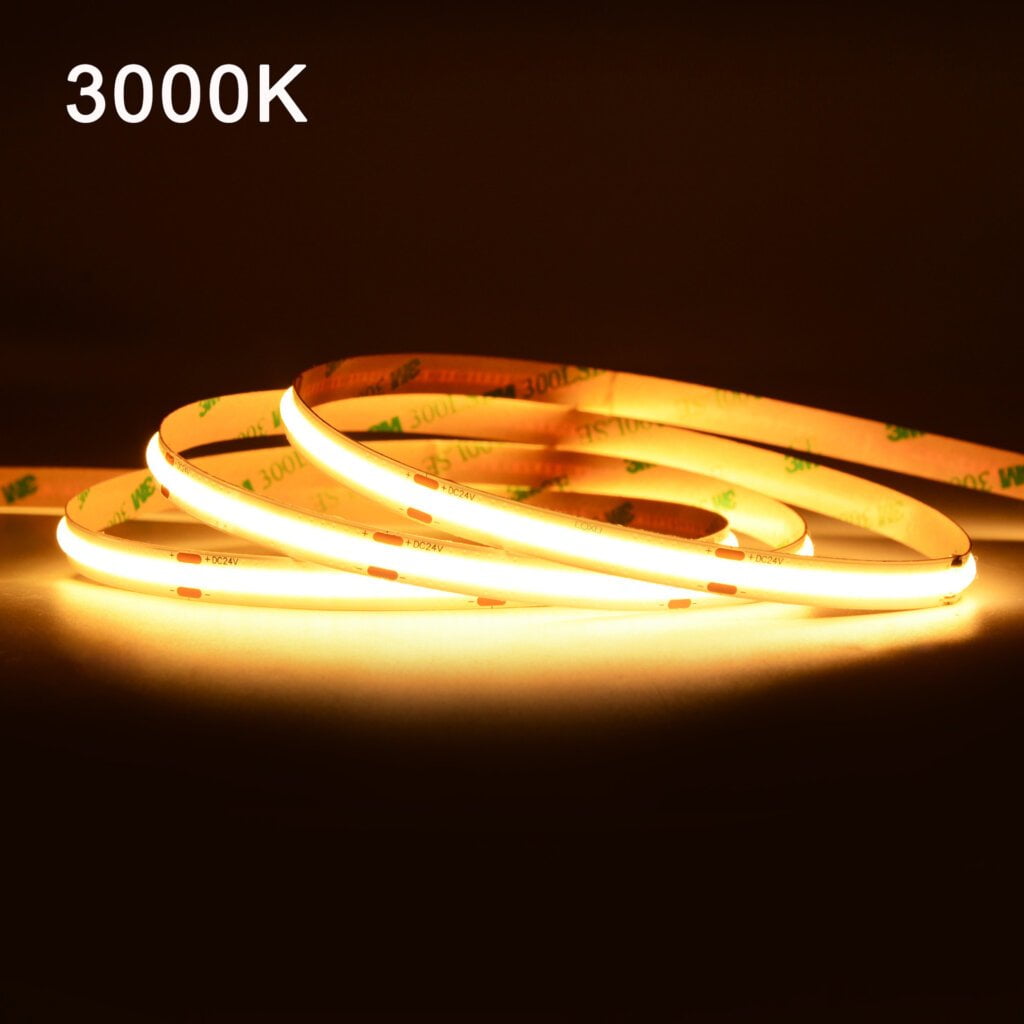Candela vs Lux vs Lumens: Understanding the Differences
Table of Contents
Lighting is crucial in setting the ambiance, improving visibility, and influencing our mood in different spaces. One common challenge for those seeking to understand or control lighting is navigating through the technical jargon—terms like Candela, Lux, and Lumens are often used interchangeably. However, they each represent distinct aspects of lighting.
This article aims to explore these differences in detail, helping you understand how to make the most informed decisions when considering lighting options.

Understanding Light Units: Candela, Lux, and Lumens
To achieve the desired lighting effect in any space, whether it’s your home, workplace, or outdoor area, understanding the fundamental units of light—Candela, Lux, and Lumens—is vital. These units measure different light components, and knowing how they interact can give you a more nuanced approach to lighting design and application.
By understanding the distinctions among these three terms, you can optimize the lighting in your spaces, contributing to aesthetics, productivity, and overall comfort.
Buckle up as we delve into light measurements, distinguishing between Candela, Lux, and Lumens.
What is Candela?
Candela denotes the Luminous Intensity of a light source. This term stems from the Latin word ‘Candela’ and is reminiscent of a candle’s intensity. For instance, approximately one Candela equals the brightness of a candle.
In simpler terms, Candela measures the intensity of light in a specific direction or angle. Visualize laser light that precisely directs light in a specific path. This explains why the Candela rating is highest for laser beams or spotlights.
What is Lux?
Lux (lx) is the unit for measuring illumination, representing the light reflected per square meter.
To obtain a Lux rating, one must consider the room’s area or the light source’s distance from a particular point. In this case, the Lux value is inversely proportional to the square of the distance. Therefore, as the distance increases, the Lux value decreases. Consequently, a light source that appears bright in a small room may not retain the same brightness level when placed in a larger space.
In mathematical terms, Lux is expressed as 1 lx = 1 lm/m^2, with the Lux value dependent on Lumens (lm). Let’s proceed to Lumens to gain a better understanding of Lux.
What is Lumens?
Lumens serve as the unit of measurement for Luminous Flux and are widely used to express light intensity. Lumens represent the total output capacity of a light source, encompassing its overall brightness. Unlike Candela (cd), Lumens does not calculate illumination from a specific direction. Instead, they indicate raw Lumens.
Raw Lumens measure the brightness of a light source from all angles. Consequently, regardless of the light’s output direction, the value of Lumens remains constant. Moreover, the Lumens value varies depending on the light’s type, color, and power source.
Comparing Candela, Lux, and Lumens: Unveiling the Distinctions
Let’s explore the key disparities between Candela, Lux, and Lumens. Refer to the table below for a concise summary:
| Specifications | Candela | Lumens | Lux |
| Definition | Candela is the brightness level of a light source at a particular angle and direction. | Lumen indicates the total output of light in all directions. | The amount of illumination that strikes per square meter area is Lux. |
| Measuring Unit Of | Luminous Intensity | Luminous Flux | Illuminance |
| Symbol (SI) | cd | lm | lx |
Understanding the Relationship: Candela, Lux, and Lumens – Shedding Light on Their Connection
Candela is the unit for measuring Luminous Intensity, while Lumen and Lux quantify Luminous Flux and Illuminance, respectively.
In simple terms, Candela indicates the brightness of a light source, Lux measures the perceived brightness of an object illuminated by the light source, and Lumen represents the overall output provided by the light source.
When it comes to the effect of distance, the values of Lumen and Lux are influenced by changes in distance, whereas Candela remains constant. This is because Candela’s value depends on angles rather than distance.
Let’s delve deeper into the relationship between Candela, Lux, and Lumens to gain a better understanding.

Candela, Lux, and Lumens are all units of measurement for light. Let’s explore the relationship between these terms in more detail:
Lumens is derived from Candela; both terms measure luminous intensity, representing the brightness of a light source. However, Lumens considers light beams from all directions, whereas Candela focuses on a specific direction.
On the other hand, Lux is the measurement of Lumens per square meter. It is derived from Lumens and provides a more accurate representation of brightness than Lumens alone. Mathematically, 1 lx = 1 lm/m^2. Lux is essentially the metric version of foot candles, an older term for Candela.
Derived from Derived from
Lux ———————→ Lumens ——————–→ Candela
1 lx = 1 lm/m2 = 1 cd·sr/m2
While Candela, Lux, and Lumens have distinct identities, they are interconnected and convertible. They share a relationship where Lux is derived from Lumens, and Lumens is derived from Candela.
Factors Affecting the Values of Candela, Lux, and Lumens:
- Distance: The distance between an object and the light source affects Lux and Lumens, as their values are inversely proportional to the square of the distance. Candela, however, is not affected by distance since it considers angles rather than distance.
- The angle of Radiance: The angle produced by the light source influences illumination. Smaller angles result in higher values of Candela and Lux, indicating brighter light. Larger angles increase the illuminated area while keeping the Lumens value constant.
- Luminous Efficiency: Luminous efficiency measures a light source’s ability to produce bright light and depends on Wattage and Lumens rating. Higher luminous efficiency is achieved when the Wattage value decreases, resulting in brighter light.
Standard Light Measuring Unit for LED Strips:
The standard light measuring unit for LED strips is Lumens. It is important to avoid the common mistake of measuring LED strip brightness solely based on Wattage, as different lights have different luminous efficiency. LED strip performance should be judged by considering Lumens per foot/meter.

The relationship between Lumens and Wattage:
Lumens indicate the total output of a light source, while Wattage represents the energy consumed by the light. To evaluate light performance, it is important to consider the efficiency of the light by examining the Lumens and Wattage values. Energy-saving bulbs are more efficient as they produce higher Lumens while utilizing less energy (Wattage).
Light efficiency is calculated as Lumens per Watt (lm/W), and higher efficiency results in improved light performance and lower electric bills.
Conclusion
Understanding the differences between Candela, Lux, and Lumens is essential for accurately evaluating and selecting lighting solutions. Each unit plays a unique role—Candela measures luminous intensity, Lumens represent the total light output, and Lux indicates the amount of light reaching a surface. Recognizing how these units relate to one another helps eliminate confusion, especially when comparing lighting products or planning lighting layouts for various environments.
By being informed about these measurements, you can make smarter lighting decisions that enhance the aesthetics, functionality, and efficiency of your space—whether it’s your home, office, or outdoor area.
If you’re looking to upgrade or install new lighting, our factory specializes in high-quality, customized LED strips and LED neon flex tailored to your exact specifications. Whether you need ambient mood lighting, task lighting, or architectural illumination, feel free to reach out—we’re here to help you bring your vision to light with precision and reliability.
FAQs
Candela measures the intensity of light emitted from a light source in a specific direction. It tells you how bright the light is from a single point, typically in a beam, like a flashlight.
Lux measures the amount of light that hits a surface. It’s the unit used to quantify the illuminance of a surface, or how bright an area appears, considering the distance and spread of the light.
Lumens measure the total amount of light emitted by a light source, regardless of direction. It tells you how much light a bulb or fixture produces, without considering where it goes.
Candela, Lux, and Lumens are interconnected. The higher the Candela (brightness), the more Lumens (total light) are emitted. Lux is calculated by dividing Lumens by the area it covers, showing how much light actually illuminates a surface.
For choosing the right lighting for a room, you should focus on Lumens and Lux. Lumens tell you how much light the bulb provides, while Lux helps you understand how much light will actually reach the surfaces you need illuminated.

Hi, I’m Xylia Xiong, a sales professional with 14 years of experience in the LED strip light industry. I specialize in providing tailored solutions, leveraging my expertise in LED products and the latest industry trends. Known for effective communication and problem-solving, I’m dedicated to helping lighting manufacturers, importers, and distributors achieve their goals.
Let’s work together to create customized solutions that exceed expectations.
Related Posts

The Best LED Strip Lights You Can Buy Right Now

Comparing WS2811 Vs WS2812B: Key Differences


